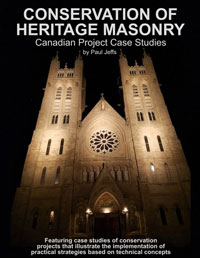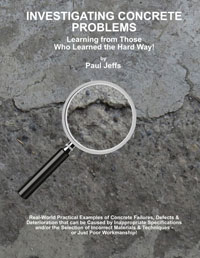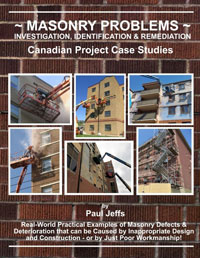|
Many conservation of heritage masonry specialists claim that if masonry cleaning cannot be undertaken without strong justification it should not take place at all. A major objection is generally that the products of natural weathering of masonry provide a degree of protection, which would be lost if removed during cleaning operations - the masonry would then be exposed to modern-day, potentially more harmful pollution. Other worthy concerns are that the often distinctive weathering of masonry - particularly for some dimension stones - can often define the character of a heritage structure, the latter also being lost when an 'as-new' appearance is produced by cleaning operations. However, I strongly believe there are occasions when cleaning is justified, and the most important consideration then surrounds the selection of a system which can effectively do the job without damaging the underlying fabric. The following are excellent examples of when the decision to clean was justified using equipment and techniques designed for use on heritage masonry. 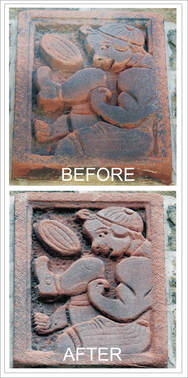 WHAT WAS THE PROBLEM? The photographs on the left illustrate one of several carved natural stone wall plaques before and after cleaning. The masonry on an old school property was undergoing conservation work prior to it being re-purposed as an office complex. As illustrated by the “Before” photograph, much of the masonry had been covered with decades of atmospheric soiling and sandstone was being lost due to its reduced ability to naturally “breathe” after rainfall. WHAT WAS THE SOLUTION? The solution was to remove the heavier deposits of soiling using a cleaning system that introduced fine particles of crushed glass into a stream of water directed at the substrate under very low pressure (<50-psi). As illustrated by the “After” photograph, the system was able to reveal most of the otherwise lost detail - without producing an “as-new” condition - nor did it cause damage to the vulnerable underlying sandstone. 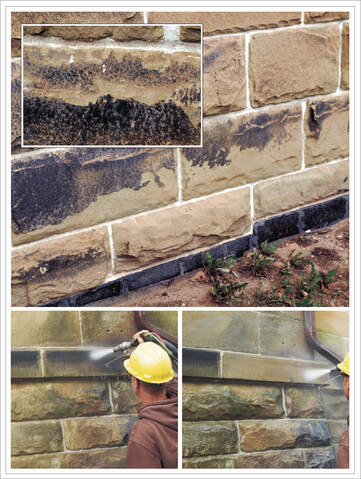 The photographs on the right illustrates a similar issue - this time on a more than one-hundred year-old art gallery that was undergoing major restoration work. During the pre-conservation investigations, it had been observed that, in some areas, heavy soiling was causing damage to the natural stone masonry units. WHAT WAS THE PROBLEM? Similar to the previous project, the damage, in the form of scaling and flaking, was the result of the soiling reducing the stone's natural ability to transmit moisture vapour to the exterior. At the time of year when a rapid fall in temperature followed a mild wet day, the inability to dry quickly caused the stone to suffer the effects of freezing. WHAT WAS THE SOLUTION? Therefore, part of the conservation strategy included cleaning to remove the heavy soiling and thereby improve the masonry's ability to dry rapidly. Trials were specified to be carried out in advance of cleaning to ensure that the selected cleaning method could achieve the objective without causing damage to the underlying substrate. The successful trials resulted in approval being given for the contractor to use a low-pressure cleaning system utilizing glass beads and water. The selected cleaning method proved to be very effective and the heavy soiling was efficiently removed without causing damage to the masonry. Projects where cleaning was justified are case studies in CONSERVATION OF HISTORIC MASONRY Canadian Project Case Studies To clean or not to clean is discussed in MASONRY PROBLEMS Investigation, Identification & Restoration Canadian Project Case Studies
0 Comments
Leave a Reply. |
AuthorBased in Guelph, Ontario, Paul Jeffs founded PJ Materials Consultants in 1989 to provide specialist consulting services for North American construction-related industries. Prior to this, he lived and worked in several countries, including the U.K., Bahrain, Iran and Japan, and provided technical advice to many construction projects within the regions surrounding those countries. Paul specializes in providing materials-related technology advice for the construction, protection and restoration of concrete and masonry - and especially for the conservation of heritage buildings and structures. Archives
March 2023
Published Books
|
|
PJ Materials Consultants was formed by Paul Jeffs in 1989 to provide a wide range of specialist consulting services for concrete and masonry structures. The main business activity is divided between the provision of materials technology expertise and professional development technical training.
|


